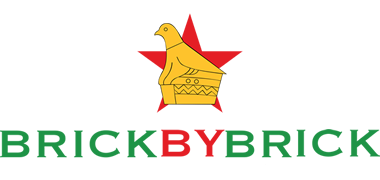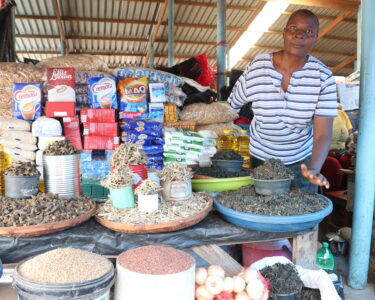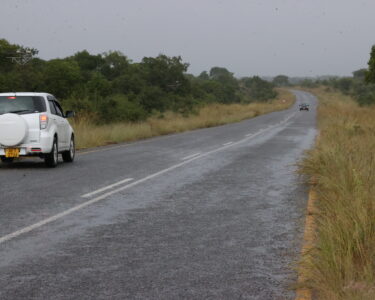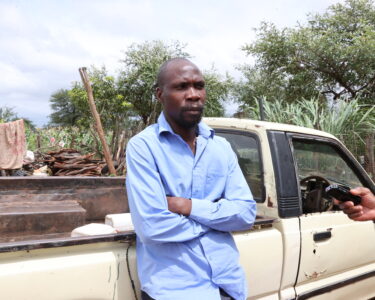Zimbabwe’s largest inland dam, Tugwi Mukosi, has pride of place in the province that has more dams than any other in the country. Masvingo Province is using it to improve the lives of its people, but don’t ask the Italians who built it what the dam’s name is. Baffour Ankomah was in the Brick by Brick team that visited the dam.
Masvingo Province prides itself of being home to 54% of Zimbabwe’s dam waters, because of the sheer number of dams in the province, an advantage that Hon Ezra Chadzamira, the Minister of State for Provincial Affairs and Devolution for Masvingo Province, is quick to remind visitors. But you don’t get the real import of the province’s joy until you arrive at the stately Tugwi Mukosi Dam, 72 km south of Masvingo city.
This is water in all its majesty, heaped behind an 89.2-metre high concrete-faced rockfill wall. The horizontally-constructed structure, all 345 metres across, is the first of its kind in Zimbabwe, a country where most dam-walls are arched-shaped. Hemmed between two mountains, the Tugwi Mukosi Dam has a beauty most dams in the country don’t have.
The depth of the water is 82.7 metres when 100% full. When the Brick by Brick team of editors arrived, the water was over 99% full. Imagine the sight, kind reader. No wonder Tugwi Mukosi holds the record as the largest inland dam in the country. Its throwback waters cover 35 km, and its catchment area covers 7,120 sq km.
It was built with pure rocks, no cement, no sand, but granite rock, like the Great Zimbabwe ruins. They were imitating the ancients. The design just involved taking rocks, piling them up, and compacting them. The Italian contractors later added a 40 cm face-slap of cement to cover the rocks to stop the water from penetrating through the rocks. Ingenious engineering.
But Masvingo Province’s joy is not just in being a custodian of all this water, or even having the two largest inland lakes in the country (Tugwi Mukosi and Mutirikwi dams), but in the potential of irrigating 40,000 hectares of land from Tugwi Mukosi alone. That is where the life and business are.
Both the Mutirikwi and Tugwi Mukosi dams were built to feed the vast sugar plantations in the Lowveld, particularly at Chiredzi and Triangle, and to irrigate agricultural projects in-between the dams and the Chiredzi estates. Two of the irrigation projects particularly come to mind: Chisase and Nyahombe, where beneficiaries are currently using the waters from Tugwi Mukosi to improve their farming and thus their lives.
Rejecting the Italian tongue
The story is told of how the Italians who came to build the dam could not properly pronounce the name of the main river on which the dam sits – Tugwi. The dam is located just below the confluence of the Tugwi and Mukosi rivers, in a deep gorge that was so ideal for dam-making.
Many Italians, known for their exceptional dam-building skills, came. They were from the 2 main contractors – Salini and Impregilo – and 4 other sub-contractors – Italcem, Pizzi, Tecnopur, and GCI. They knew how to distribute the money among themselves, though 2 local companies were found in the mix: Drilling Resource Zimbabwe, and Murray and Roberts.
But, unable to pronounce Tugwi properly, the Italians comforted themselves during the construction period with “Tokwe” (what limitations doesn’t a European tongue have?).
And, surprise, surprise (or maybe not), “Tokwe” nearly became the official name of the dam. Only this time, the local people and their chiefs would not take it as many chiefs and their people in the country (and Africa at large) had taken it in the past, when the European colonisers had mispronounced African names and they had stuck! Or, as the colonisers often did, even changed the African names completely, and the African (maybe overawed by the European tongue) had meekly, if not gladly, used the changed names as the official ones. Poor Africans.
But this time around, though “Tokwe” had been accepted by high society in Harare, the capital, the chiefs and people of the lands watered by the Tugwe and Mukosi rivers would not take any nonsense from an Italian tongue, no matter what Harare thought.
Thus, it is said, that at the official commissioning of the dam on 18 May 2017, the chiefs and people of the area officially asked the government to revert the name to Tugwi, instead of the Italian Tokwe. And the government obliged. Thank God.
Since then attempts have been made to implement the planned 15 MW hydro power project attached to the dam. The 15 MW is enough to power 10,000 homes, but it is limited in scope because of the amount of water that can be allowed out of the dam to run the power station. Only enough water to produce 15 MW can be allowed, the Brick by Brick team was told.
Masterplan gone AWOL
The only truly depressing thing about the dam is its masterplan which was done after the construction of the dam, instead of the other way around – very uncharacteristic of Zimbabwe.
Somehow, uncharacteriscally, the master plan could only be done after the completion of the construction works – which started in 1998 and only finished in December 2016. During the 8 years of construction, nobody could think of making a master plan. Which is quite a surprise.
But finally – very finally – it was done in late 2020 by a consortium of Zimbabwean universities – the University of Zimbabwe, Great Zimbabwe University, National University of Science and Technology, and Midland State University. But a good two-and-a-half years have passed, and the approval processes have not finished, and as such, the masterplan is not yet out.
As a result, not much activity is happening at Tugwi Mukosi. Some fishing is being done by National Parks and a private company called Tugwi Bream. But there is great potential for tourism and hospitality facilities. One mountain and its environs, near to the dam wall, which have now become an island, (the largest so far) cover 650 hectares, larger than the Harare upmarket suburb of Borrowdale.
Some tourism though is going on at Tugwi Mukosi. Both local and foreign tourists go there during weekends and holidays to enjoy the beauty of the place. Before Covid-19 struck the country in early 2020, the dam was receiving over 3,000 visitors a month, but this was drastically reduced to around 800 a month during the Covid years. The tourist numbers are, however, going up now.
Irrigation schemes
The real good news of Tugwi Mukosi is the opportunity it gives to farmers downstream, including small-scale farmers, to improve their lives.
One such group of farmers make up the Nyahombe irrigation scheme, a few dozens of kilometres from the dam, where 80 beneficiaries are working under a manager from the Agricultural and Rural Development Authority (ARDA). Each beneficiary has a hectare of land to farm. They grow maize, wheat, groundnuts, sunflower, sugar beans, etc.
The beneficiaries come from the Nyahombe area, where the government resettled farmers in 1982 and allocated them 5 hectares of land per household.
But the people have struggled because of inadequate water for agriculture. The Tugwi-Mukosi dam, therefore, has come as a God-send because this is a drought-tolerant area which, without the dam, makes it difficult for people to survive.
Before the dam, the people had relied on cotton as a cash crop and maize as their food crop. Last year was the first time they ventured into growing wheat, thanks to the waters from the Tugwi-Mukosi Dam.
The Nyahombe irrigation project uses 15 mega litres of water per hectare per year. This is reduced, in the winter season, to 7.5 mega litres per hectare per year.
The Tugwi Mukosi Dam has been a great help to the villagers who have nothing but praise for President Emmerson Mnangagwa and his government. Last year, the President donated a 50-hectare centre pivot to the irrigation project, to make it 2 centre pivots at the scheme. The other is a 30-hectare.
Generally, the beneficiaries are happy with the project because they say it has helped them and their children. A special place was given to the youths at the scheme to stop them from going into drugs and prostitution. When selecting the beneficiaries, the scheme prioritised the father and two sons per household. Each household thus has 3 beneficiaries.
However, amidst all the good news, the beneficiaries are dogged by the lack of equipment to do land preparation. Worse, they don’t have money to hire tractors and other agricultural machinery. So they use manual labour, which hampers progress.










